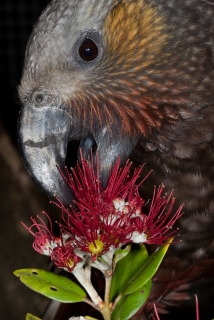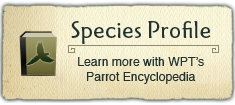Project Regions:
Kākā |
|
|
Collaborators/Funders
New Zealand Department of Conservation, New Zealand Parrot Trust, Te Iwi Tahi o Karioi (TIToK), the Karioi Project, Auckland Zoo, Native Bird Rescue (Waiheke Island), Te Iwi Tahi o Karioi Ahu Whenua Trust, Raglan Native Rehabilitation, Cape Sanctuary (Hawke's Bay), Keefe Family Foundation
Past forest clearance and issues with feral mammals have caused severe declines in Kākā populations.
Kākās are threatened by habitat destruction and predation by introduced species including stoats, which kill females on eggs, Black Rats and the Brush-tailed Possum. Introduced wasps and possums compete for honeydew, which appears to have a disastrous impact on the Kākā's breeding success. An emerging danger is window strikes, causing injury or death to many birds each year.
How WPT makes an impact: The WPT has joined with local and regional partners to support intensified feral predator control, future installation of nest boxes, rehabilitation, release and tracking of injured Kākā on Waiheke Island, a citizen science project assessing the effectiveness of window markers in preventing bird collisions, training rescue organisations on Kākā care, and radio-tracking captive-bred birds at Cape Sanctuary to better understand movements and survival.
Population: 7000-10,000
Vital statistics: Size: 45 cm (17.5 in) Weight: 900 g (31.5 oz)
Range: N.m. meridionalis: South and Stewart Islands and larger offshore islands of New Zealand.
N.m. septentrionalis: North Island and some offshore islands.
Natural history: Is restricted to unbroken areas of Nothofagus and Podocarpus forest between 450-1000 m (1476-3280 ft). Will visit gardens and orchards in winter. Forages for fruits, berries, seeds, flowers, buds, nectar, sap, invertebrates, honeydew from scale insects and larvae. Has been recorded feeding in kiwi fruit orchards and on flax flowers. Is quiet and shy. Breeding is September-March; nest is a large cavity in a tree trunk.


































